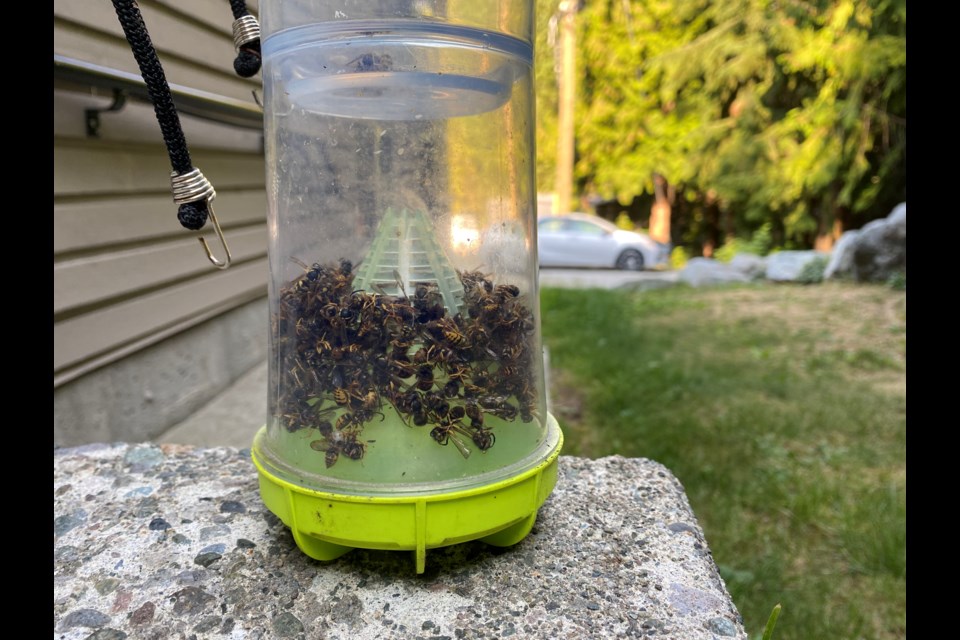If you’ve noticed an uptick in wasps this summer in Whistler, you’re not mistaken.
A recent post on a Whistler Facebook page about wasp activity lead to a flurry of comments from residents, and so Pique set off to answer the question: what’s with all the wasps in Whis?
We spoke with Iain Glass, executive director of Ensure Hive Future, a federal non-profit focused on apiary research and education. While he works with honeybees, he’s a wealth of knowledge about wasps, too.
Glass explained wasp colonies start off the season with a queen who rears the first generation, and as the summer goes along, the population of the hive grows exponentially larger. They go to work pollinating gardens, but by late July and early August, their food supply decreases.
“You got one graph line that's an increasing populous. You've got another line with food supply that's dropping down. When the two of those intersect, you now have a problem on your hands, because they are going to go for other sources of food, and that's the garbage, the barbecue, whatever they can get,” Glass said.
The slow flow of nectar leads to robbing pressure, where honeybees—and wasps—will steal food from other colonies. Unlike honeybees, wasps eat meat, and they will go into honeybee colonies and eat them for survival.
“We’ve lost three colonies so far this year,” Glass said of the wasp invaders.
Ensure has 17 other locations aside from Whistler with hives. Glass said that normally, the wasps are the worst in their Fort Langley location.
“Whistler’s way worse. So, what I'm speculating we're seeing with the village is an intersection,” he said.
Where forests and human development come together creates an intersection. Forests provide excellent habitat for yellow jackets and hornets who will make hives in the ground, and then human activity in Whistler creates easy food sources.
“This is my speculation—because we're in this intersection spot, I think that we have a tremendously disproportionate number of them that are here.”
Redundant wasp population
Aside from queens, which hibernate in the winter, wasps naturally only survive the spring and summer. In early to mid-August, new queens are produced, and wasps’ drive for protein goes up in response to rearing new queens.
Glass said yellow jacket wasps have been so bad, multiple businesses in Whistler reached out to ask him for solutions to stop guests from getting stung, and several patios have had to shut down over concerns for guests’ safety.
When cold and wet weather returns, the wasps should die off. Until then, there are a couple solutions.
The first is queen trapping, and Glass doesn’t usually recommend it, as queens are beneficial.
“Second is that if you start to trap them as you get into early July, again, we're going for a redundant workforce, and you're not going to affect the health of the colonies… rather than them going back and telling their friends where all the goodies are, you're eliminating that possibility.”
Using artificial pheromones is your best bet to catch wasps.
Avoid swatting wasps, even if they come to steal a bite of your barbecue, because they are aggressive and will likely attack.
They are also territorial, and another method of protection involves setting up an imitation wasp nest, though the strategy works best later in the summer and they will eventually see through the scarecrow defence.
“I have zero qualms about declaring complete war on them by the time you get to the end of July, in the sense that they're a redundant workforce,” Glass said.



